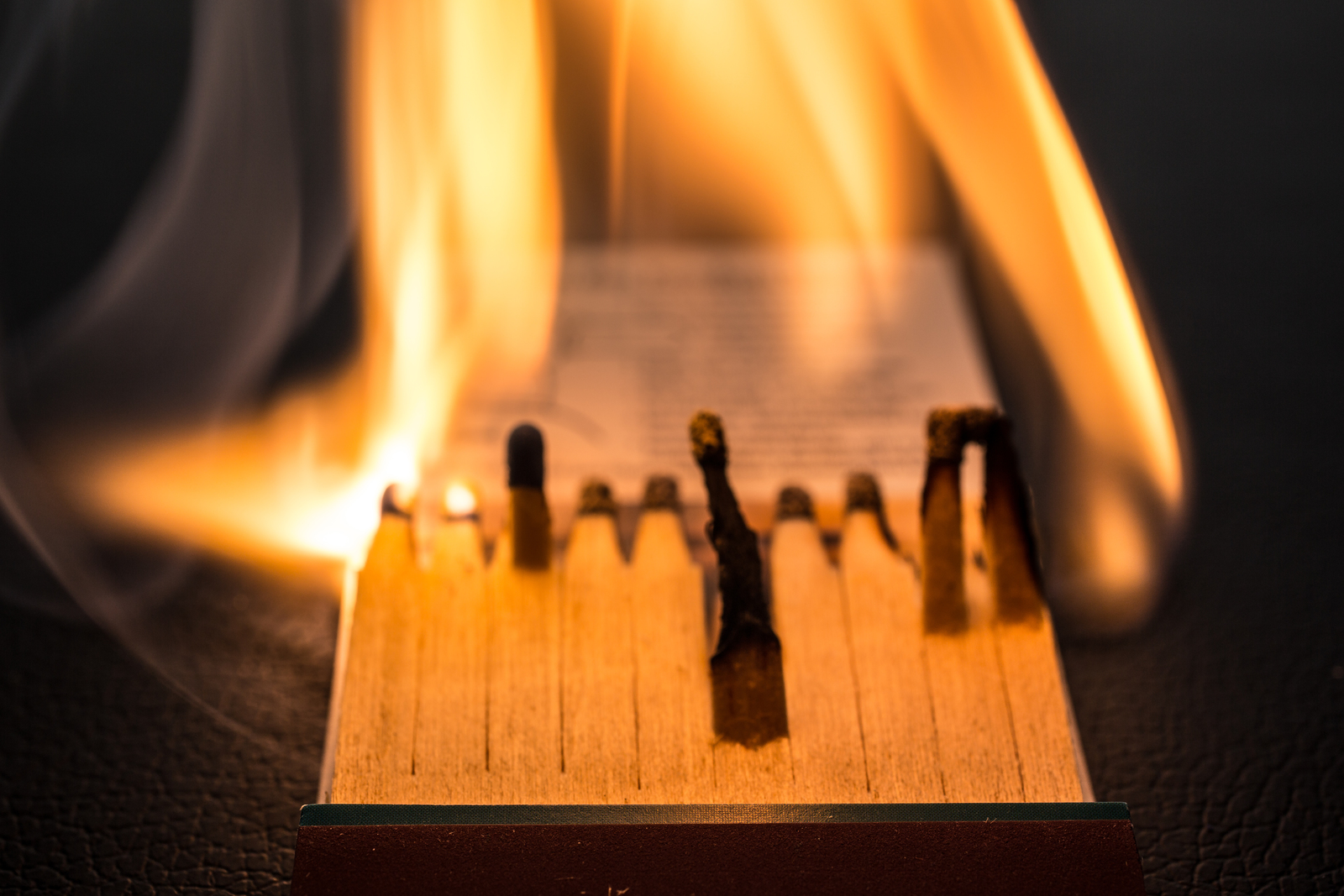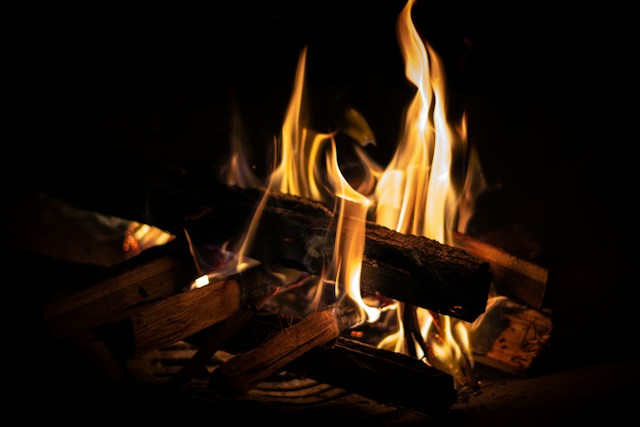The allure of a crackling fire in the fireplace or wood stove is unmatched, providing not just warmth but a comforting ambience. However, the key to a safe, efficient, and enjoyable indoor fire lies in the meticulous preparation and maintenance of your heating system. From traditional fire-starting methods to modern alternatives, and essential safety measures to advanced combustion control, this guide delves into the comprehensive aspects of ensuring the safety, functionality, and aesthetics of your indoor fire. Whether you’re a seasoned fireplace enthusiast or a newcomer eager to embrace the cozy glow, these detailed insights will guide you through every step of the process.

Ensuring Fireplace or Wood Stove Safety:
Regular chimney inspections are indispensable for ensuring the safety and efficiency of your fireplace or wood stove. These inspections, ideally conducted annually by a certified professional, involve a comprehensive examination for blockages, creosote buildup, and structural issues. Creosote, a byproduct of burning wood, is highly flammable and can lead to chimney fires if not diligently removed. The damper, a pivotal component in controlling airflow, requires careful adjustment—fully open for a robust fire and partially closed for a slower, controlled burn. The meticulous cleaning of ash and debris extends beyond aesthetics; it ensures unobstructed airflow, promoting optimal combustion, and significantly reducing the risk of chimney fires. Professional chimney sweeps employ specialised tools to thoroughly clean and inspect the entire system, offering a holistic approach to fireplace maintenance.
Choosing Quality Firewood:
The selection of quality firewood is a nuanced decision, extending beyond personal preference. Opt for hardwoods like oak or maple, known for their superior burning characteristics, generating more heat and burning for a more extended period. Well-seasoned wood, stored for at least six months to a year, minimises moisture content, thereby reducing smoke production. Kindling diversity, including materials like dry pine needles or small branches, adds layers to the ignition process, fostering a quicker and more efficient fire start. The use of fire starters, whether commercially available or homemade, presents a convenient solution for igniting wood, particularly in challenging conditions, streamlining the ignition process.
Building the Perfect Fire Lay:
Experimenting with various fire lay styles introduces an element of customisation based on individual preferences and specific needs. The tepee configuration, where kindling converges at the top, facilitates a quick ignition, ideal for immediate warmth. The log cabin style, with logs stacked akin to a cabin structure, provides a longer, sustained burn, catering to those seeking a more prolonged fireplace experience. Proper spacing between kindling pieces is pivotal to facilitating optimal airflow, ensuring a successful combustion process. It is an art form where the arrangement enhances the efficiency and aesthetics of the fire.
Adding Larger Pieces of Wood:
The gradual introduction of larger logs post-kindling phase is a strategic approach to preventing the smothering of the fire and promoting a steady, controlled burn. Different stacking techniques, such as the top-down method, involve placing larger logs at the bottom and smaller pieces on top, optimising the burning process for both efficiency and longevity. This approach considers the dynamics of burning wood, creating an environment conducive to sustained warmth and reduced maintenance during the burning cycle.

Lighting the Fire:
Considering alternative ignition methods, such as propane torches or electric starters, adds a layer of versatility to the ignition process. Observing and adjusting the placement of kindling during the ignition phase ensures a smooth and efficient fire start. Paying attention to the behaviour of the fire as it initiates allows for real-time adjustments, ensuring optimal results and a seamless transition from ignition to a robust, stable burn. This proactive approach to ignition methods enhances the overall experience and efficiency of the indoor fire.
Maintaining Airflow:
Dynamic damper adjustments throughout burning cycles are essential to control the fire’s intensity and airflow. Understanding and effectively utilising secondary air supply controls, if available, optimise combustion efficiency, contributing to a cleaner burn and reduced emissions. This nuanced control over the combustion process ensures not only a more environmentally friendly fire but also maximises the energy extracted from the burning wood, enhancing the overall efficiency of the heating system.
Safety Precautions:
Please note that in New Zealand law all fires must be closed in wood burners this is an inbuilt safety precaution so they don’t have a large risk of sparks falling, however, be careful when opening the fire to try and prevent any issues. When doing this it may also be a good idea to keep a drink bottle similar to an old Powerade bottle next to the fire to make sure if any embers fall on the ground you can extinguish it immediately. It prevents sparks and embers from escaping, reducing the risk of accidental fires and providing peace of mind.
Household Safety
Keeping a readily accessible and regularly serviced fire extinguisher is an essential safety practice for all household members. Ensuring that everyone in the household is familiar with the location and operation of the fire extinguisher enhances preparedness, emphasising the importance of ongoing fire safety education.
New Zealand law requires you to have a smoke alarm within three metres of every sleeping space within the house, on every level of the house and also within the escape routes. It is important to ensure this is done before lighting or installing your wood burner. Fire and Emergency New Zealand has a guide on their Escape My House website about where to put Smoke Alarms and any other forms of Alarms required within the household. This website is something worth looking at to see that you have all the adequate safety requirements and also gives you advice on how to maintain your Smoke Alarms to ensure you and your family’s safety.
Proper Ventilation:
Installing carbon monoxide detectors near the fireplace and strategically adjusting window openings based on room size contribute significantly to a safe and well-ventilated indoor environment. Proper ventilation is paramount in preventing the buildup of carbon monoxide, a colourless and odourless gas produced during combustion. The installation of detectors provides an additional layer of safety, alerting occupants to potentially dangerous gas levels and ensuring a timely response to mitigate any health risks associated with carbon monoxide exposure.
Regular Maintenance:
Scheduling professional chimney cleanings at least annually is a non-negotiable practice for maintaining a safe and efficient fireplace. This routine service not only removes creosote buildup—a common precursor to chimney fires—but also allows for a comprehensive inspection of the chimney’s structural integrity. Promptly sealing any cracks or gaps in the chimney structure is equally crucial. This preventive measure prevents heat loss, enhances energy efficiency, and mitigates the risk of potential structural damage. Regular maintenance, in the form of systematic inspections and timely repairs, ensures the longevity and optimal functioning of the entire heating system. See our guide to maintaining your wood burner.
Extinguishing Safely:
Using a fireplace tool to disperse embers before extinguishing the fire ensures a more efficient cooling process. Allowing ashes to cool completely in a designated metal container before disposal is a practice rooted in responsible ash handling and disposal. Embers can remain hot for extended periods, posing a potential fire risk. This cautious approach to extinguishing and ash disposal minimises the risk of accidental fires, aligning with best practices for ensuring safety and maintaining a controlled environment even after the fire has been extinguished.

Additional Lighting Methods for Indoor Log Fires:
Traditional Fire Starter:
Gathering the essential materials for a traditional fire start involves using newspaper, small dry twigs as kindling, and dry, seasoned firewood. Begin by crumpling several sheets of newspaper and placing them at the base of the fireplace. Arrange a stack of dry kindling over the newspaper in a teepee or log cabin style, ensuring proper airflow. Position seasoned firewood on top, leaving spaces between the logs for air circulation. Ignite the newspaper at multiple points, and as the kindling catches fire, it will gradually ignite the larger logs. This time-tested method provides a gradual, controlled burn that effectively warms the space.
Firelighters or Fire Starters:
For a quick and reliable ignition, commercial firelighters are an excellent option. Along with firelighters, gather kindling and firewood. These firelighters, available in various forms, are designed to ignite easily and sustain a flame. Place the firelighter at the base of the fireplace, surrounded by a carefully arranged stack of kindling and stacked firewood. Light the firelighter, and as it burns, it will ignite the surrounding kindling and logs. This method is particularly useful when time is a factor, providing a convenient choice for efficient ignition.
Propane Torch:
Utilising a propane torch requires ensuring you have dry, seasoned firewood. This method provides a powerful, controlled flame for starting an indoor log fire efficiently. Hold the flame directly onto the kindling or firewood in the fireplace, ensuring that all areas are exposed. The high temperature of the torch quickly ignites the wood, offering a fast and efficient way to start the fire. This approach is especially handy when a quick and reliable ignition is needed without the use of additional accelerants.
Electric Fire Starters:
This modern and safe option for starting an indoor log fire requires an electric fire starter or hot air blower, along with kindling and firewood. Place the device among the carefully arranged kindling and firewood in the fireplace. Turn it on to generate heat, and as the kindling catches fire, it will ignite the logs. Electric fire starters eliminate the need for open flames, making them suitable for indoor use. Additionally, they are adjustable, allowing you to control the temperature and intensity of the fire.
Charcoal Chimney Starter:
While commonly used for charcoal, a chimney starter can also be adapted for indoor log fires. Gather a charcoal chimney starter, newspaper, kindling, and firewood for this method. Place crumpled newspaper in the bottom compartment and fill the top compartment with kindling and firewood. Ignite the newspaper at the bottom, and as the kindling catches fire, it will ignite the firewood. This structured and controlled approach facilitates efficient airflow for combustion, making it a suitable method for starting fires indoors.
Magnesium Fire Starter:
Prepare a magnesium fire starter, striker, and kindling for this method. Shave magnesium from the fire starter onto a pile of kindling in the fireplace. Use the striker to create sparks, igniting the magnesium. The high-temperature sparks ignite the magnesium, creating a hot flame that quickly catches the kindling on fire. This method is particularly useful in challenging conditions where reliable ignition is essential. Magnesium fire starters are lightweight and portable, making them a practical tool for both indoor and outdoor fire starting.
Incorporating these additional details provides a comprehensive understanding of the materials needed and the step-by-step process involved in lighting an indoor log fire. Always prioritise safety, and proper ventilation, and adhere to local regulations when starting and maintaining indoor fires.
In embracing these comprehensive practices, individuals gain a profound understanding of the intricacies involved in creating a safe, efficient, and enjoyable fireplace or wood stove experience. The synergy of these detailed steps not only enhances safety but also elevates the ambience of the indoor space. Always prioritise safety and stay informed about the specific requirements of your heating system for a seamless and secure indoor fire experience. Whether you opt for traditional fire-starting methods or embrace modern alternatives, the magic of an indoor fire is best enjoyed when coupled with a commitment to safety, meticulous maintenance, and an appreciation for the timeless art of creating the perfect blaze.